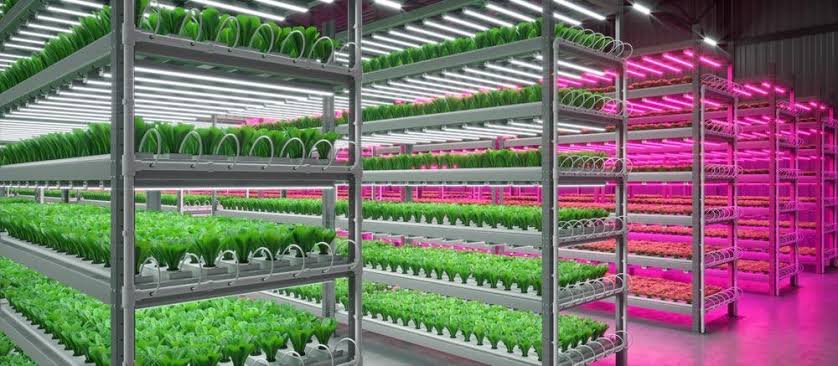Indoor farming (also known as vertical farming) sees crops being grown in controlled indoor environments, typically in stacked layers or vertical towers. Although this approach to production has existed for many years, it’s recently been gaining traction.
Vertical farming offers many benefits, as it makes use of sustainable practices while increasing efficiency. In this article, we’ll delve into the impact of vertical farming on the produce industry and discuss how it’s transforming the way food is grown and consumed.
If you’re a produce business looking to further boost efficiency, consider using technologies like https://usesilo.com/. Silo is built to streamline operations along the food supply chain, allowing for greater business growth.
Without further ado, here’s how the produce industry is being transformed by indoor farming.
Practiced environmental responsibility
Indoor farming has significant environmental benefits. Growing in a controlled environment means more efficient resource utilization for inputs like physical space, energy, and water.
Using hydroponics or aeroponics, for example, indoor farms can drastically reduce water consumption compared to traditional production methods.
The lack of open fields also significantly reduces the need for pesticides and herbicides, resulting in less risk of chemical runoff. It also mitigates the risk of pollutants in the air.
Localized production and reduced supply chain strain
A major benefit of indoor farming is the ability to grow closer to metropolitan areas and consumer markets.
This localized production reduces the distance food has to travel. This, in turn, allows for:
- Reduced transportation costs
- A smaller carbon footprint
- Less overall food waste
By bringing food production closer to the point of consumption, vertical farming adds to the development of more affordable and resilient food systems.
Less concern for land scarcity and urbanization
Land scarcity can be a major concern for outdoor growers. A limited supply of this necessary resource means greater competition, as well as reduced product quality when production has to occur not under the best conditions, but under what’s feasible.
Indoor farming has not only changed the parameters dealt with from square to cubic footage, but has also allowed the industry to produce under new conditions. Among the key drivers of these changes are the following.
The overcoming of land constraints
Both the expansion of urban areas and the conversion of viable land for other uses present significant challenges to traditional growing. Vertical farming offers a solution to these land constraints by using vertical space and repurposing buildings in urban environments.
By transforming unused (or underused) spaces like warehouses or old factories into productive farms, land scarcity concerns become less of a problem.
The enhancement of food security
Indoor farming plays a crucial role in enhancing food security by providing a reliable source of fresh produce throughout the year.
Controlled production environments allow for year-round cultivation, regardless of external weather conditions or seasonal variations. This resilience in production helps mitigate the risks associated with climate change and extreme weather events. It also prevents disruptions in the global food supply chain.
As a result, vertical farming contributes to ensuring a more stable and accessible food supply, particularly in regions where access to fresh produce is limited.
Greater crop diversity and innovation
Vertical farming facilitates the cultivation of a wide range of produce, as it encourages growers to experiment with different varieties, growing types that may not be suitable for traditional methods in their region.
Moreover, indoor farming encourages innovation in production, as researchers and growers explore new techniques, genetic modifications, and cultivation practices to further enhance crop characteristics and nutritional value.
Increased consumer satisfaction and a changing food culture
The benefits of a changing food culture extend beyond the producer. Vertical farming has a host of advantages for consumers. These include the following.
Quality and safety assurance
Indoor farming offers consumers ample benefits in terms of the quality and safety of the produce they have access to and choose to consume.
The controlled environment limits the risk of exposure to pests, diseases, and contaminants, resulting in cleaner and safer produce.
And because indoor farms are usually located closer to urban areas, produce can be picked and transported at optimal freshness and flavor. This gives end-consumers high-quality, nutritious, and tastier food options.
Year-round availability
The ability of indoor farms to operate during all seasons ensures a consistent supply of fresh produce regardless of climate limitations.
Consumers can enjoy a diverse selection of locally grown fruits and vegetables, limiting the need for seasonal restrictions on production. This can help limit dependence on imported produce and support local businesses.
The improved access also helps address food deserts (areas with limited access to fresh produce) by bringing fresh, nutritious options nearer to under-served communities.
Indoor farming: a net gain for the produce industry
Indoor farming is revolutionizing the produce industry by providing sustainable solutions to environmental challenges.
Whether it’s helping by overcoming land scarcity or enhancing food security, it’s reshaping the future of food production.
As the industry continues to evolve, vertical farming is well-positioned to play a vital role in ensuring a resilient, efficient, and accessible food supply for a growing global population.







